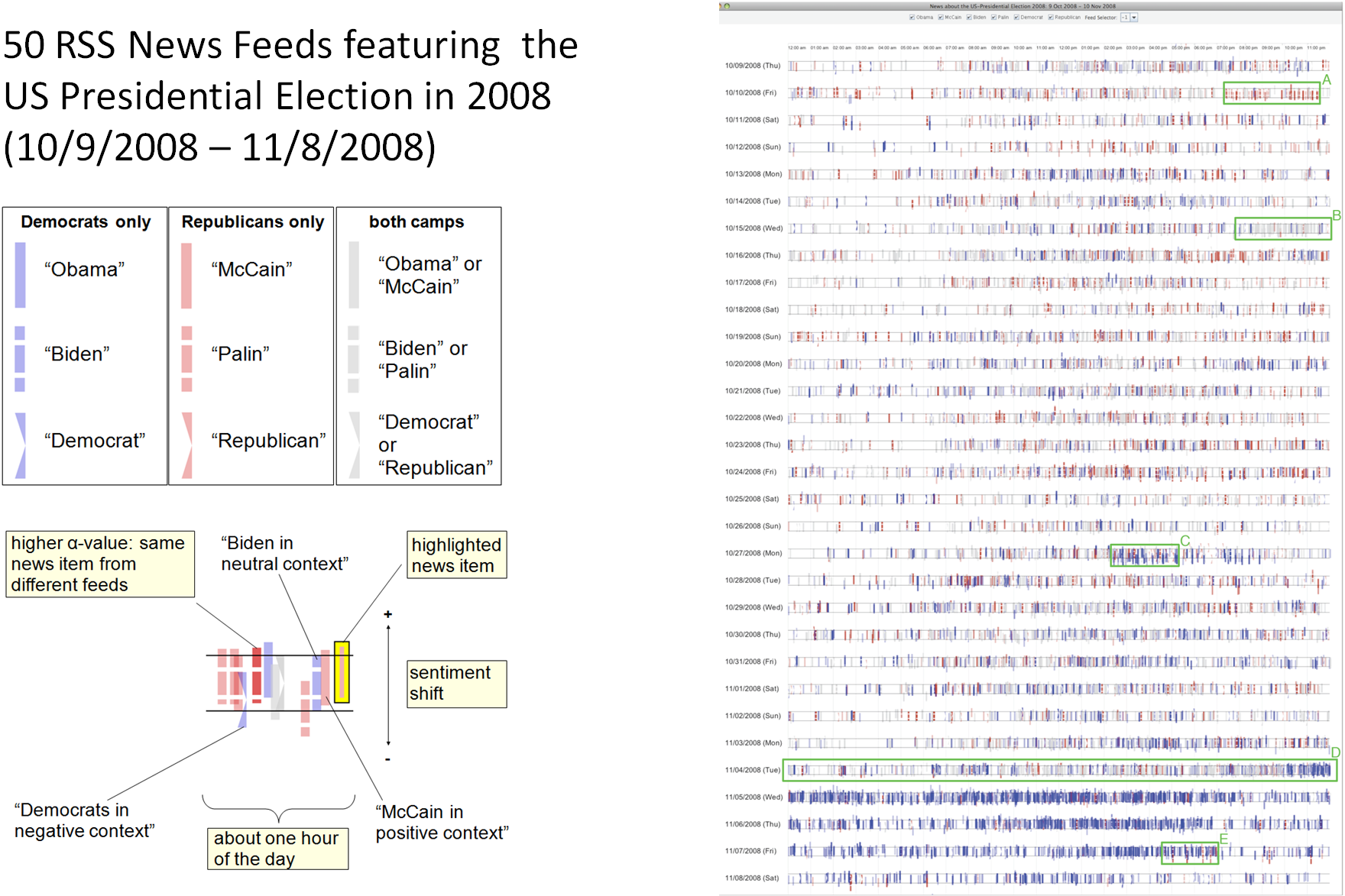Visual Sentiment and Opinion Analysis
The analysis of sentiments and opinions in text data has attracted an increasing interest recently. The main reason is that the amount of opinionated user-generated content is growing at a fast pace in the Web 2.0. People convey their opinions and sentiments about products, photos, politicians, movies, hotels, etc. Consequently, a feature- or target-based sentiment analysis is required to analyze such data, i.e. the analysis is not limited to determining the polarity (positive/negative) of a sentiment, but also evaluates what the sentiment refers to. The uncertainty involved in such an automated analysis of ambiguous natural language texts as well as the large amount of potentially interesting opinion patterns demands advanced visual interfaces for interactive exploration. Our research aims at developing such systems integrating suitable automatic and visual methods. A further special interest is the visual exploration of development of opinions over time both in historical analyses and in real-time. The following paragraphs will give an overview of past and ongoing research.
Visual Analysis of Product Features
When exploring customer feedback about products, it is not enough to see whether a product is evaluated generally good or bad. It is much more important to explore which aspects or features of the product are liked or disliked by customers, to see which features are frequently commented on or show a high degree of ambiguity and to compare different products with respect to their features. Figure 1 shows such details in one view that has been generated automatically from a large set of customer reviews.
For more details we would like to refer you to the corresponding paper.

Target-dependent Separation of Sentiments and Opinions
Target-based sentiment analysis is in some cases even relevant if the polarity of a whole text is of interest. In movie reviews, for instance, people write about both the plot and the quality of a movie. But if bad things happen within the plot of the movie, it does not mean that it is a bad movie. Only those sentiment words that refer to the movie quality should be regarded. A similar case is given in the domain of photo comments, where people might comment that something is a great photo of a horrible place. In a first attempt we achieved to separate opinions regarding the photo quality from general sentiments regarding the objects displayed in the photo. The result was used as an input for a visualization showing which geo-spatial areas contain places and objects with a generally positive or negative association.
Time-dependent Sentiment and Opinion Analysis
Not only the sentiment towards a target at a certain point in time is of interest, but also how this sentiment develops over time. For example, this is interesting when tracking news about politicians during an electoral campaign as shown in Figure 2. The visualization allows exploring which statements or actions of politicians cause heavily opinionated comments within news. Currently, we are also working on visualizations that allow a real-time detection of interesting issues.
Further visual encodings are explained on the left and more details given in the corresponding paper.

More information about this and related work can be found in the following publications.
